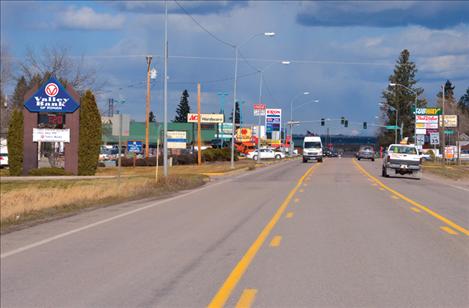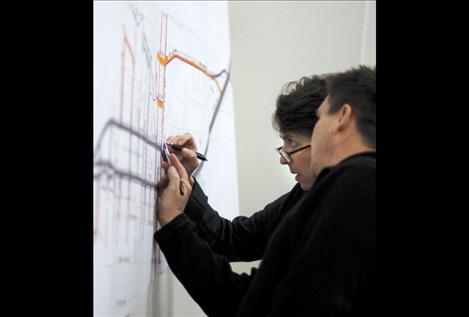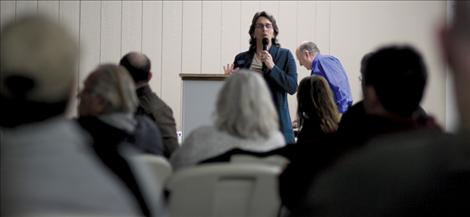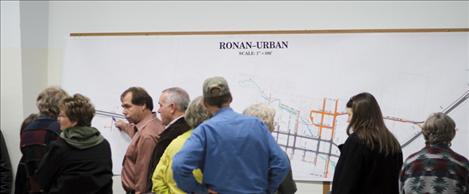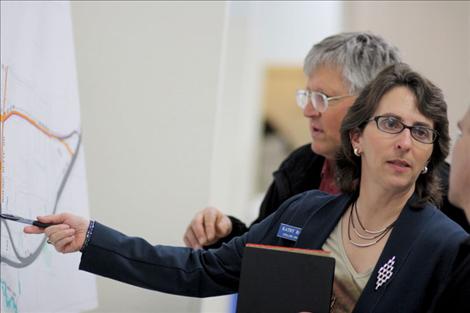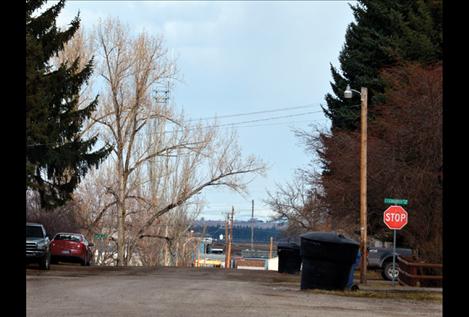Ronan residents get update on Highway 93 project
Hey savvy news reader! Thanks for choosing local.
You are now reading
1 of 3 free articles.
RONAN — Nearly 100 local residents packed Ronan’s Community Center March 4 to hear a presentation regarding proposed U.S. Highway 93 improvements, take a look at the proposed roadway, and ask questions of Montana Department of Transportation personnel and engineers.
The $23 million project is scheduled to begin construction in 2017, but that’s optimistic, according to MDT.
“(A 2017 groundbreaking) is our goal,” MDT Missoula District Administrator Ed Toavs said. “The challenge on this one is going to be property acquisition.”
The 3 1/2-mile section of U.S Highway 93 outlined in the blueprints runs from Innovation Lane and the Jore Corporation north through Ronan’s urban downtown, ending with the road’s transition into a four-lane highway near Pablo. From Innovation Lane north to Valley Bank at Ronan’s southern boundary is currently a five-lane highway — two lanes of traffic traveling north, two lanes of traffic traveling south, and a center lane for turning.
Once at the bank, the road splits and present-day U.S. Highway 93 becomes northbound traffic. Southbound traffic will be rerouted down First Avenue, reconnecting with the northbound lane near what is presently Ronan’s Boys and Girls Club.
The two sections of highway would be connected by a series of one-way roads, similar to Arlee’s new highway system.
The current plans would require MDT to purchase more than 200 plots of land for the highway’s right-of-way and road expansion.
“We’re hoping to start the appraisal and negotiations process in 2015,” Toavs said. “That is going to be the biggest challenge for us, and the one factor we can’t control. We can’t control negotiations once the properties have been appraised.”
Both Toavs and project engineer Kathy Harris stressed that they wanted public comments as the project progresses, and that final designs have not been adopted.
“There are a lot of issues in regards to how to make sure that everyone has good access with the final design, so we have an awful lot of complicated urban-type designs that will have to be figured out,” Toavs said. “It’s a pretty tough project, pretty challenging, and we have a lot variables we need to account for and come up with solutions for.”
These variables include the high amount of clay and silt deposits in Ronan’s top soil, sensitive
ecological areas like Spring Creek and Ronan’s high groundwater level.
The stretch was pulled from the original project because of the complexity and challenges of the Ronan section
“What happened was (that with) the sections south of Ninepipes and north of Ronan, it was easier to come to solutions that would satisfy all parties involved. We were able to build some of those several years ago,” Toavs said. “Ronan’s section was split out because it has been recognized as the most complicated section of the entire corridor.”
A combination of ecological and human factors make the project a challenge. Toavs and Harris referred to the project as an “urban job,” meaning many people would be affected by it.
After hearing the presentation, Ronan residents asked questions regarding speed limits, access to businesses, pollution, the appraisal process for soon-to-be purchased property and access to the highway.
One resident who resides south of Ronan was concerned while looking at the new highway plan. According to the blueprint, he and the more than 20 other residents in his subdivision would have to travel a quarter mile north on Highway 93 before he could reach a turnaround and head south.
“We’re very interested in hearing from people like you as the process moves on,” Harris said. “We want to get as much accessibility as possible.”
Harris also said that normally MDT and the engineers do not hold public meetings so early in the process because many questions cannot be answered — it’s just too early.
And even with construction more than five years away, Ronan is not the final piece of the puzzle.
“The next piece (of road to be reconstructed) will be Post Creek Hill,” Toavs said. “The section runs from the 44 Bar north to Gunlock Lane. We had a lot of interest from people wanting us to do something with that.”
Toavs had no estimated completion date for the Post Creek Hill section.
“We haven’t started anything,” he said. “We will probably start the design process on that section for this spring and summer.”
And yet another section is scheduled for renovation sometime in the future. Between Gunlock Lane and Innovation Lane lies Ninepipes Reservoir — a sensitive ecological area requiring culverts, animal crossings and more.
“Ninepipes will be the last piece built because of the sensitivity of the kettle ponds in the area,” Toavs said. “Those wetlands are quite specific to the United States and the State of Montana. That’s why we held out to the end. It took a little bit longer to figure out how we wanted to build roads for that area.”
U.S. Highway 93 through the Mission Valley sees more than 20,000 vehicles every day. If all goes according to plan, Harris said the new highway will decrease the likelihood of traffic accidents threefold while improving traffic flow. It should also ready the Mission Valley for an increase of up to 40,000 vehicles per day over the next 20 years.















